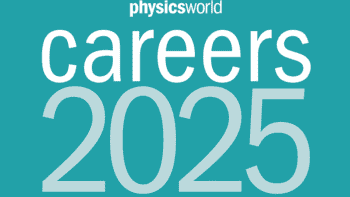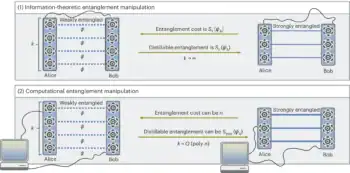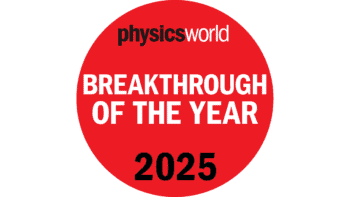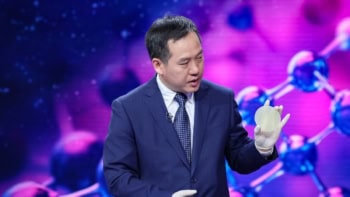
A new type of quantum bit (qubit) that stores information in a quantum dot with the help of an ensemble of nuclear spin states has been unveiled by physicists in the UK and Austria. Led by Dorian Gangloff and Mete Atatüre at the University of Cambridge, the team created a collective quantum state that could be used as a quantum register to store and relay information in a quantum communication network of the future.
Quantum communication networks are used to exchange and distribute quantum information between remotely-located quantum computers and other devices. As well as enabling distributed quantum computing, quantum networks can also support secure quantum cryptography. Today, these networks are in the very early stages of development and use the entangled quantum states of photons to transmit information. Network performance is severely limited by decoherence, whereby the quantum information held by photons is degraded as they travel long distances. As a result, effective networks need repeater nodes that receive and then amplify weakened quantum signals.
“To address these limitations, researchers have focused on developing quantum memories capable of reliably storing entangled states to enable quantum repeater operations over extended distances,” Gangloff explains. “Various quantum systems are being explored, with semiconductor quantum dots being the best single-photon generators delivering both photon coherence and brightness.”
Single-photon emission
Quantum dots are widely used for their ability to emit single photons at specific wavelengths. These photons are created by electronic transitions in quantum dots and are ideal for encoding and transmitting quantum information.
However, the electronic spin states of quantum dots are not particularly good at storing quantum information for long enough to be useful as stationary qubits (or nodes) in a quantum network. This is because they contain hundreds or thousands of nuclei with spins that fluctuate. The noise generated by these fluctuations causes the decoherence of qubits based on electronic spin states.
In their previous research, Gangloff and Atatüre’s team showed how this noise could be controlled by sensing how it interacts with the electronic spin states.
Atatüre says, “Building on our previous achievements, we suppressed random fluctuations in the nuclear ensemble using a quantum feedback algorithm. This is already very useful as it dramatically improves the electron spin qubit performance.”
Magnon excitation
Now, using a gallium arsenide quantum dot, the team has used the feedback algorithm to stabilize 13,000 nuclear spin states in a collective, entangled “dark state”. This is a stable quantum state that cannot absorb or emit photons. By introducing just a single nuclear magnon (spin flip) excitation, shared across all 13,000 nuclei, they could then flip the entire ensemble between two different collective quantum states.
Each of these collective states could respectively be defined as a 0 and a 1 in a binary quantum logic system. The team then showed how quantum information could be exchanged between the nuclear system and the quantum dot’s electronic qubit with a fidelity of about 70%.

Qubit needle detected in a haystack of nuclear spins
“The quantum memory maintained the stored state for approximately 130 µs, validating the effectiveness of our protocol,” Gangloff explains. “We also identified unambiguously the factors limiting the current fidelity and storage time, including crosstalk between nuclear modes and optically induced spin relaxation.”
The researchers are hopeful that their approach could transform one of the biggest limitations to quantum dot-based communication networks into a significant advantage.
“By integrating a multi-qubit register with quantum dots – the brightest and already commercially available single-photon sources – we elevate these devices to a much higher technology readiness level,” Atatüre explains.
With some further improvements to their system’s fidelity, the researchers are now confident that it could be used to strengthen interactions between quantum dot qubits and the photonic states they produce, ultimately leading to longer coherence times in quantum communication networks. Elsewhere, it could even be used to explore new quantum phenomena, and gather new insights into the intricate dynamics of quantum many-body systems.
The research is described in Nature Physics.



